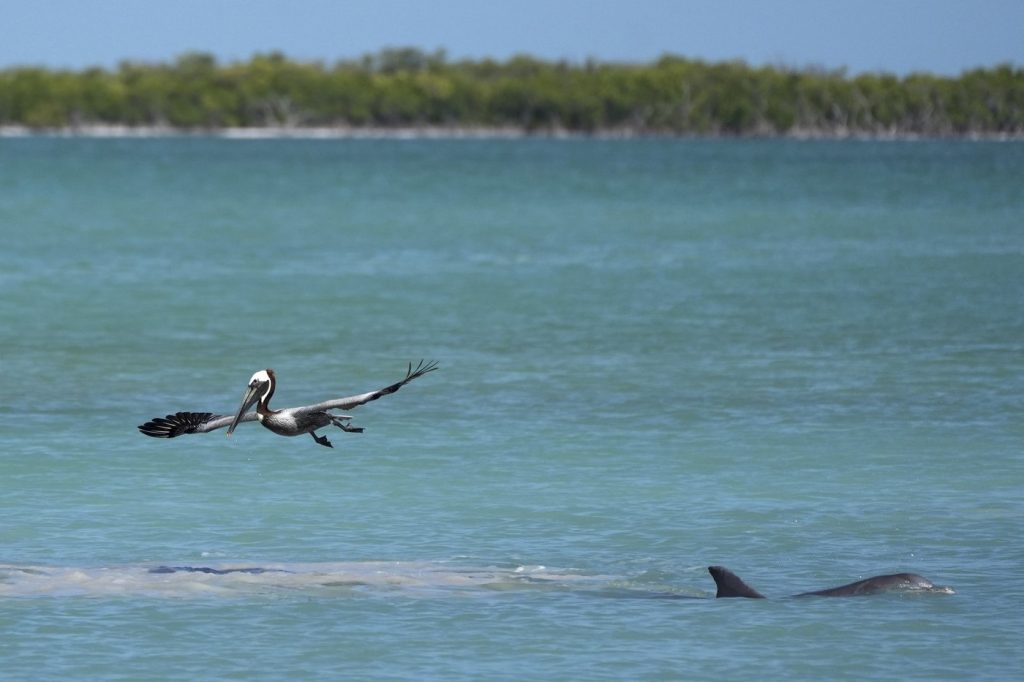The Everglades, often associated with swamps and wildlife, has a significant impact beyond its borders, particularly affecting Florida Bay. This body of water, situated between the southern part of mainland Florida and the Florida Keys, comprises about one-third of Everglades National Park.
High salinity levels during dry spells threaten the ecosystem, impacting the survival of various plant and animal species. Nevertheless, experts have expressed optimism that an early rainy season this year will mitigate the risk of a large-scale seagrass die-off, similar to devastating events experienced in the past.
Steve Davis, the chief science officer at The Everglades Foundation, emphasized that Florida Bay acts as the estuary of the Everglades, which functions as a vast, slow-moving river beginning near Orlando and flowing southward. He explained that wet years allow sufficient water inflow to maintain salinity levels within a healthy range for the bay, but during drought years, salinity can spike to harmful levels, jeopardizing the marine habitats.
Due to its unique hydrology, Florida Bay experiences minimal tidal fluctuations, allowing water to stagnate for extended periods, leading to salty conditions that can double normal ocean salinity. These conditions pose serious threats to the health of bay ecosystems. The last significant seagrass die-off unfolded in 2015 when 40,000 acres (16,000 hectares) of seagrass perished, leaving a horrific scene characterized by dead grass floating and emitting a sulfurous odor, likened to rotting eggs. It disrupted the entire marine food web, affecting fish populations and biodiversity.
Despite over 40% of Florida currently under drought conditions, Davis remains cautiously optimistic about avoiding another catastrophic seagrass die-off in Florida Bay this year. He noted that salinity levels are already lower compared to the dire conditions of 2015. This improvement can be attributed partly to a major restoration project that elevated more than 3.5 miles (5.6 kilometers) of the Tamiami Trail. This roadway, originally a significant barrier to water flow from the Everglades, was retrofitted with two long bridges completed in 2013 and 2019, enhancing the water flow across the region.
Davis highlighted the importance of this infrastructure change, stating that it has significantly moderated salinity levels in the bay. Additionally, this year’s prediction of an early onset of the wet season further bolsters hopes for the health of Florida Bay.
Moving forward, scientists are counting on an extensive restoration initiative known as the Everglades Agricultural Area Reservoir. This ambitious, $3.9 billion project aims to create a reservoir and wetland system to store and purify polluted water from Lake Okeechobee before it's released into the Everglades. The project aims to not only alleviate water quality issues but also reduce the pollution that reaches Florida’s coasts.
Davis has referred to the Everglades Agricultural Area Reservoir as a potential "game changer" for the restoration of freshwater flow into the Everglades ecosystem. He asserted that ongoing restoration efforts are currently beneficial due to improved water management but stressed that the full benefits will become evident once larger volumes of clean water can be funneled into the Everglades, ultimately enhancing conditions in Florida Bay.
Moreover, the economic implications of the Everglades restoration cannot be overlooked. Paul Hindsley, chief economist at The Everglades Foundation, pointed out that every dollar invested in restoration yields $4 in economic returns. The restoration benefits are manifold, contributing to residential and industrial water supply, minimizing the impact of drought and mitigating the risks of flooding caused by heavy rains. The Everglades also play an essential role in offering over $5 billion annually by reducing potential costs associated with National Flood Insurance Program claims while enhancing the resilience of South Florida’s natural defenses against storm surges.
This strategic importance of protecting the Everglades' environment highlights the intertwined nature of ecological and economic health for Floridians.










